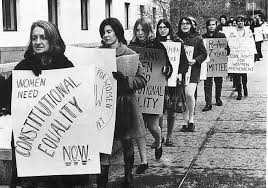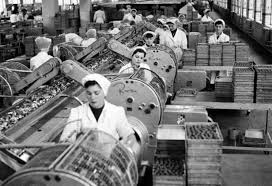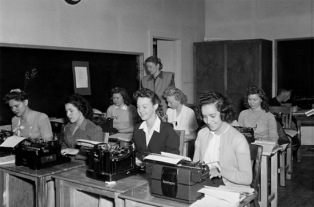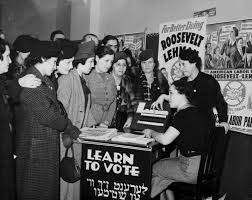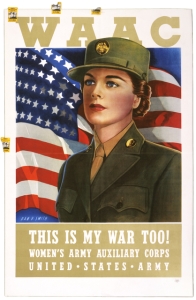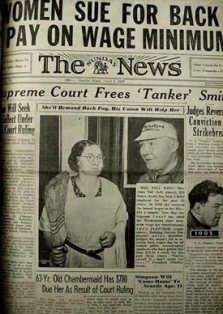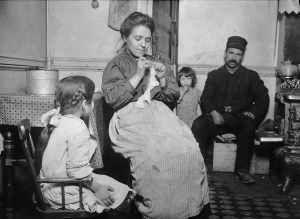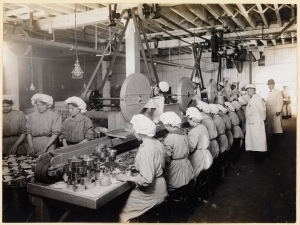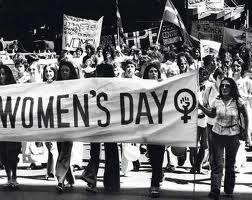Woman from 1970-today
About three decades after the Second World War to the present, the economy and society in America had many changes. Particularly, human rights and equal rights of men and women had been seriously. In fact, the late 1960s were years of protest and reform. Young Americans demonstrated against the Vietnam War. African Americans demonstrated for civil rights. Women demonstrated for equal treatment. The period of change came during the 1970s. In this era, people were also opposing the use of nuclear weapons, proposing world peace, and women gained the right to have abortions. Women were receiving more rights than they had in the past. Most women in the 1970’s were striving for a footprint in society and wanted to achieve more than just the standard household position. Women were fighting for the right of equality as men. This equality they were striving for would enable them to work in offices, classrooms, law firms, and science labs. The Feminist movement began in
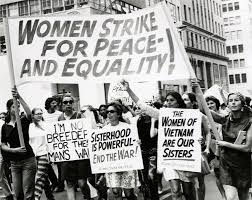
the 1960’s but carried over to the 1970’s gaining a larger audience. Women were beginning to stand up for what they believe in; they are demonstrating this by protesting and picketing. A handful of powerful women were supporting this movement with all force and were attempting to gain women’s equality. Strikes and picketing were the most popular form of demonstrating what women want. Majority of the strikes were directly aimed towards sexist laws and social equality. The movement was getting broader which in turn was giving women more opportunities to equality. With the gain of these job opportunities, women were still losing in the field of wage. There was still a huge gap in the wage of men to women, but has made minimal progress. Women were getting paid about 45% less than men for the exact same position in any field. The roles of women were beginning to change but they still have not achieved their goal, equality.
Drastic shifts in sex roles seem to be sweeping through America. Between the start of the women’s movement in the 1960s and the beginning of the 21st century, women were entering the workforce in droves. At the end of the Second World War only 10 percent of married women with children under the age of six held jobs or were seeking them. Since then mothers of preschool children have thronged the job market: by 1985 the census had classified more than half of these young mothers as participants in the work force. In 1995, the average time mothers spent doing paid work jumped to almost 26 hours a week and the time spent on housework fell commensurately at 19 hours. Then the trend stalled. From 1995 to 2003, mothers, on average, spent about the same amount of time on household chores, but their work outside the home fell by almost four hours a week. In fact, according to the article “Woman in the Work Force”, the author George Guilder tried to say that “From 1972 to 1985 women’s share of professional jobs increased from 44 to 49 percent and their share of “management” jobs nearly doubled growing from 20 to 36 percent.” Currently women account for 47 percent of the labor force. This is a major increase from 1950, when women represented just 29.6 percent of the workforce. Now that there are more women in the workplace, they are in positions of leadership and even as CEOs. During the economic storm of 2009, women leaders proved they can be as tough, decisive and competitive as men. By 2020 the number of women in the workforce is expected to increase of 6.2 percent from today. If current trends continue, women will soon make up the majority of the U.S. work force. For four decades, the number of women entering the workplace grew at a blistering pace, fostering a powerful cultural and economic transformation of American society. Despite women’s advancements, however, substantial inequalities remain. Although an increasing number of women are either the sole breadwinner for their family or share the role with their partners, women in the United States are paid only 77 cents for every dollar a man makes. The pay gap is even larger for women of color. On average, African American women make 64 cents for every dollar that white men make.
The future apparently promises yet more blurring of traditional sex roles in the work force. Indeed, with a resurgence of feminism, young women also felt more empowered. According to the article “Why do women outnumber men in college”, the author David Francis said that “They had greater guarantees by the government that job discrimination by employers against women would not be tolerated. They anticipated a more even playing field with respect to men in terms of access to high-paying careers for college graduates and to professional and graduate college programs, the authors note. Since 1980, the wage premium for a college degree has risen, especially for women. Over a lifetime, many women have taken time out from work to look after their children full time. But more recently, their participation in the labor force has begun to resemble that of men.” According to a survey in the 1980s, half of all 1985 College graduates were women, and women are earning a steadily rising share of
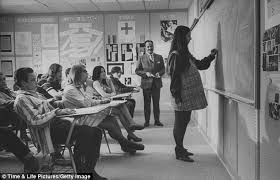
all advanced degrees, including close to one third of all degrees in law, business, accounting, and computer and information sciences. It is fairly well known that women today outnumber men in American colleges. In 2003, there were 1.35 females for every male who graduated from a four-year college and 1.3 females for every male undergraduate. That contrasts with 1960, when there were 1.6 males for every female graduating from a U.S. four-year college and 1.55 males for every female undergraduate. The female share of college students has expanded in all 17 member-nations of the Organization for Economic Cooperation and Development in recent decades, so much so that women now outnumber men in college in almost all rich nations.
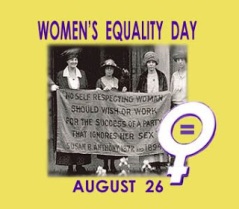 In 1971, to insure the equality of women’s rights and push back against suppression, violence, discrimination and stereotyping, a bill passed designating August 26th of each year as Women’s Equality Day. According to the article “Women’s Equality Day– History & the 21st Century”, Women’s Equality Day brings our attention to women’s continued fight for equal rights and the backing of the United States on this front. Indeed, American women would face opportunities, challenges, and sizeable hurdles over the last 100 years. Although, political, economic, and international forces will weigh heavily on women in the United States as they attempt to conquer key positions, great women have proven the capability and leadership of women. Examples of these range from Rosa Parks and Eleanor Roosevelt fighting for civil rights and equality to great scientists such as Marie Curie and Jane Goodall. The 1980s brought a significant number of “firsts” for women in the United State, including the first female Supreme Court justice, the first female astronaut, and the first woman to be included on a major ticket for the U.S. presidency. As you know, in 1983, astronaut and astrophysicist Sally Ride became the first American woman in space
In 1971, to insure the equality of women’s rights and push back against suppression, violence, discrimination and stereotyping, a bill passed designating August 26th of each year as Women’s Equality Day. According to the article “Women’s Equality Day– History & the 21st Century”, Women’s Equality Day brings our attention to women’s continued fight for equal rights and the backing of the United States on this front. Indeed, American women would face opportunities, challenges, and sizeable hurdles over the last 100 years. Although, political, economic, and international forces will weigh heavily on women in the United States as they attempt to conquer key positions, great women have proven the capability and leadership of women. Examples of these range from Rosa Parks and Eleanor Roosevelt fighting for civil rights and equality to great scientists such as Marie Curie and Jane Goodall. The 1980s brought a significant number of “firsts” for women in the United State, including the first female Supreme Court justice, the first female astronaut, and the first woman to be included on a major ticket for the U.S. presidency. As you know, in 1983, astronaut and astrophysicist Sally Ride became the first American woman in space

aboard the space shuttle Challenger and Geraldine A. Ferraro, who shattered political barriers as the first female major-party nominee on a presidential ticket when she was chosen as the Democratic vice presidential candidate in 1984. According to the article “Geraldine A. Ferraro, first woman major-party candidate on presidential ticket, dies at 75”, President Obama praised Ms. Ferraro as “a trailblazer who broke down barriers for women, and Americans of all backgrounds and walks of life.”
Until now, the women are gradually improving their position in society. If you try to compare between the woman’s roles in the nineteenth century and today, it will be a big difference. It marks their relentless efforts. The woman needs the respects, so they fought, they are fighting, and they got it.
